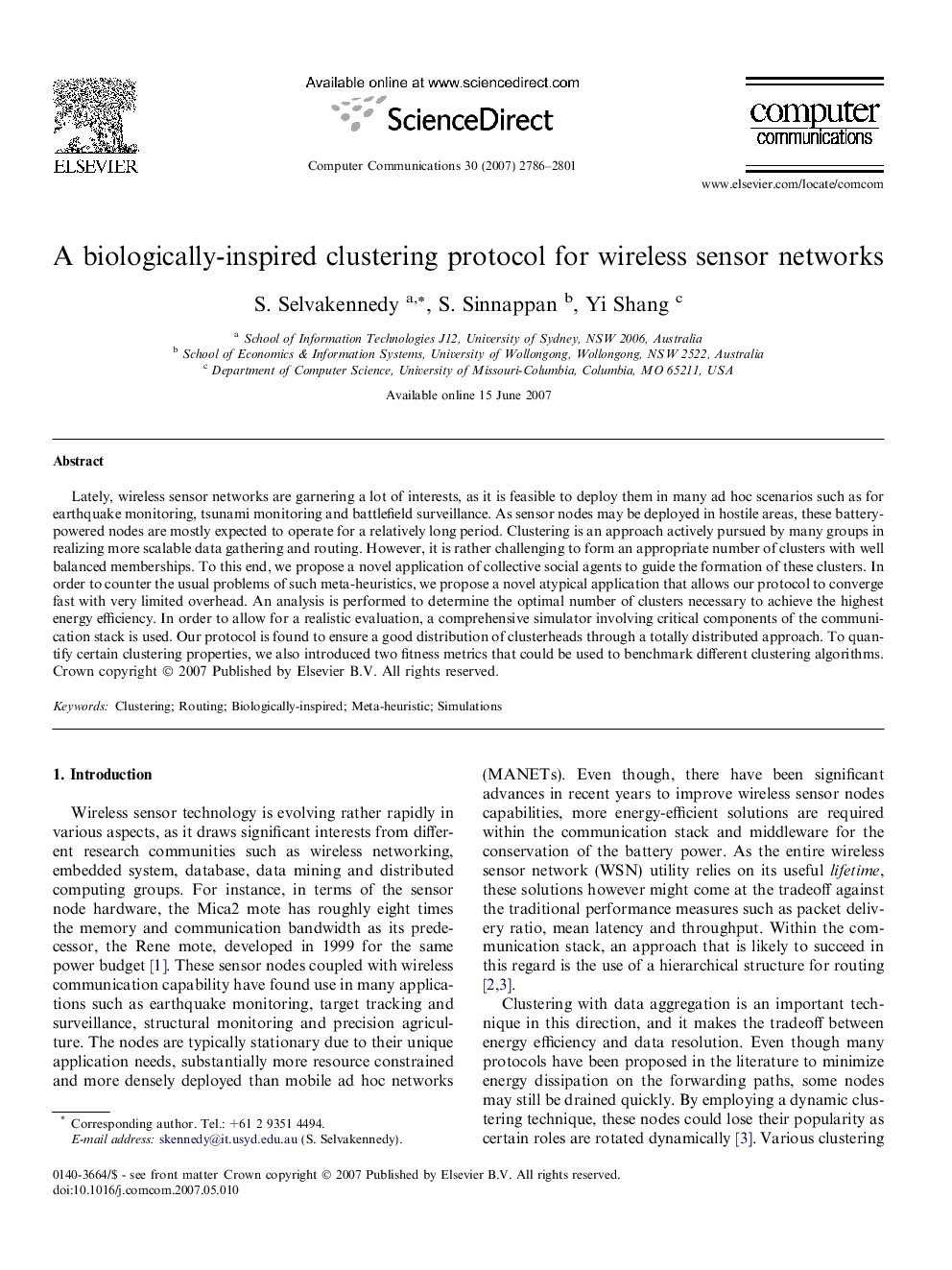| Article ID | Journal | Published Year | Pages | File Type |
|---|---|---|---|---|
| 447144 | Computer Communications | 2007 | 16 Pages |
Lately, wireless sensor networks are garnering a lot of interests, as it is feasible to deploy them in many ad hoc scenarios such as for earthquake monitoring, tsunami monitoring and battlefield surveillance. As sensor nodes may be deployed in hostile areas, these battery-powered nodes are mostly expected to operate for a relatively long period. Clustering is an approach actively pursued by many groups in realizing more scalable data gathering and routing. However, it is rather challenging to form an appropriate number of clusters with well balanced memberships. To this end, we propose a novel application of collective social agents to guide the formation of these clusters. In order to counter the usual problems of such meta-heuristics, we propose a novel atypical application that allows our protocol to converge fast with very limited overhead. An analysis is performed to determine the optimal number of clusters necessary to achieve the highest energy efficiency. In order to allow for a realistic evaluation, a comprehensive simulator involving critical components of the communication stack is used. Our protocol is found to ensure a good distribution of clusterheads through a totally distributed approach. To quantify certain clustering properties, we also introduced two fitness metrics that could be used to benchmark different clustering algorithms.
